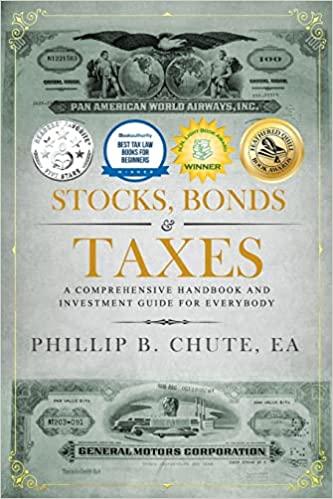Answered step by step
Verified Expert Solution
Question
1 Approved Answer
Create a dataset that has monthly returns for the following stocks: TSLA, JNJ , GOOGL, and GE from January 1 , 2 0 1 8
Create a dataset that has monthly returns for the following stocks: TSLA, JNJ GOOGL, and GE from January to December using their "adjusted" price. Create an equally weighted portfolio consisting of these stocks and calculate the monthly returns of your portfolio. Import the Market Returns and RiskFree Rate dataset and join with your portfolio to obtain the market return market return and riskfree rate riskfree
Hint: The code to retrieve the necessary data from the tidyquant package on R is as follows: 'stocks cTSLAJNJ 'GOOGL', GE tqgetget "stock.prices", from to
Hint: An equally weighted portfolio means that you invest the same proportion of your total investment into each stock. If you have stocks, you'd invest of your total funds into each.
Dataset Market and Risk Free Return: MarketandRiskFreeReturnstocsv
How many months did this portfolio exceed a return rate?
month
months
months
months
Utilizing the companies from question above, calculate the following, as a percentage, rounded to four decimal places:
Portfolio standard deviation
GE standard deviation
Portfolio arithmetic average
GE arithmetic average
What is the cumulative return of the portfolio rounded to the nearest percent?
Calculate TSLA's average monthly excess return relative to the market. Give your answer as a percentage, rounded to two decimal places.
Estimate Beta and Adjusted R using a simple linear model for the portfolio return vs the market return. Which statement has the correct Beta and Adjusted R output and corresponding correct interpretation?
Beta indicating the fund is less risky than average; Adj. R is indicating the fund is at best, moderately correlated with the overall market.
Beta indicating the fund is riskier than average; Adj. R is indicating the fund is correlated with the overall market.
Beta indicating the fund is less risky than average; Adj. R is indicating the fund is correlated with the overall market.
Beta indicating the fund is riskier than average; Adj. R is indicating the fund is at best, moderately correlated with the overall market.
Create a drawdown chart and table for the portfolio using the Drawdown functions. Display the top drawdowns to digits. What statement below is correct?
During the second largest drawdown, the portfolio fell from its peak. It took months to reach the bottom and months to recover. The total episode lasted months.
During the largest drawdown, the portfolio fell from its peak. It took months to reach the bottom and months to recover. The total episode lasted months.
During the second largest drawdown, the portfolio fell from its peak. It took months to reach the bottom and month to recover. The total episode lasted months.
During the second largest drawdown, the portfolio fell from its peak. It took months to reach the bottom and month to recover. The total episode lasted months.
In which month is the difference between the portfolio return and the market return the highest?
Step by Step Solution
There are 3 Steps involved in it
Step: 1

Get Instant Access to Expert-Tailored Solutions
See step-by-step solutions with expert insights and AI powered tools for academic success
Step: 2

Step: 3

Ace Your Homework with AI
Get the answers you need in no time with our AI-driven, step-by-step assistance
Get Started


